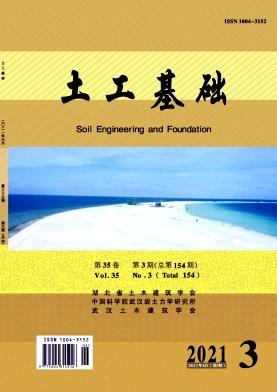Uniaxial and Triaxial Creep Performance of Calcarenitic and Sandy Oolitic Limestone Formations for Stability Analysis of Roman Rock-Cut Tombs in Alexandria, Egypt
引用次数: 1
Abstract
The Greek-Roman rock-cut tombs at Alexandria, Egypt, were excavated mainly in the calcarenitic limestone formations and show varying degrees of damage of rock pillars and ceilings. In order to understand the long-term rock mass behaviour in selected tombs and its impact on past failures and current stability, uniaxial and triaxial Creep tests and rock mass quality assessments had been carried out. Creep behavior of rock plays an important role in underground works, especially for archeological structures subjected to large initial stresses. These conditions yield nonreversible deviatoric creep strains that develop during time at constant stress. In order to describe the time-dependent deformation, various approaches have been established based on analytical, empirical, and numerical methods. Our analyses show that the Roman tombs at Alexandria have been cut into poor quality rock masses. Rock failures of ceilings and pillars were frequently facilitated by local, unfavourably oriented persistent discontinuities, such as tension cracks and joints. Other failures were related to the disintegration of calcarenitic and oolitic lime-stones. Our data suggest that, in Roman age monumental tomb construction, low-strength rock masses resulted in modifications of the planned tomb design in order to minimise the risk of rock falls and to prevent collapses.埃及亚历山德里亚罗马石刻墓群稳定性分析中钙质和砂质鲕粒灰岩的单轴和三轴蠕变性能
在埃及亚历山大港出土的希腊罗马石雕墓葬,主要是在钙屑质石灰岩地层中出土的,石柱和顶棚都有不同程度的破坏。为了了解选定墓葬中岩体的长期行为及其对过去破坏和当前稳定性的影响,进行了单轴和三轴蠕变试验和岩体质量评估。岩石的蠕变特性在地下工程中起着重要的作用,特别是对于处于大初始应力作用下的考古结构。这些条件产生不可逆的偏蠕变应变,在恒定应力下发展。为了描述随时间变化的变形,已经建立了基于解析、经验和数值方法的各种方法。我们的分析表明,亚历山大的罗马墓葬被切割成质量很差的岩石。顶板和支柱的岩石破坏往往是由局部的、不利方向的持续不连续,如张裂缝和节理造成的。其他破坏与钙屑岩和鲕状石灰石的崩解有关。我们的数据表明,在罗马时代的纪念性坟墓建筑中,低强度的岩石导致了对计划坟墓设计的修改,以尽量减少岩石坠落的风险并防止倒塌。
本文章由计算机程序翻译,如有差异,请以英文原文为准。
求助全文
约1分钟内获得全文
求助全文

 求助内容:
求助内容: 应助结果提醒方式:
应助结果提醒方式:


